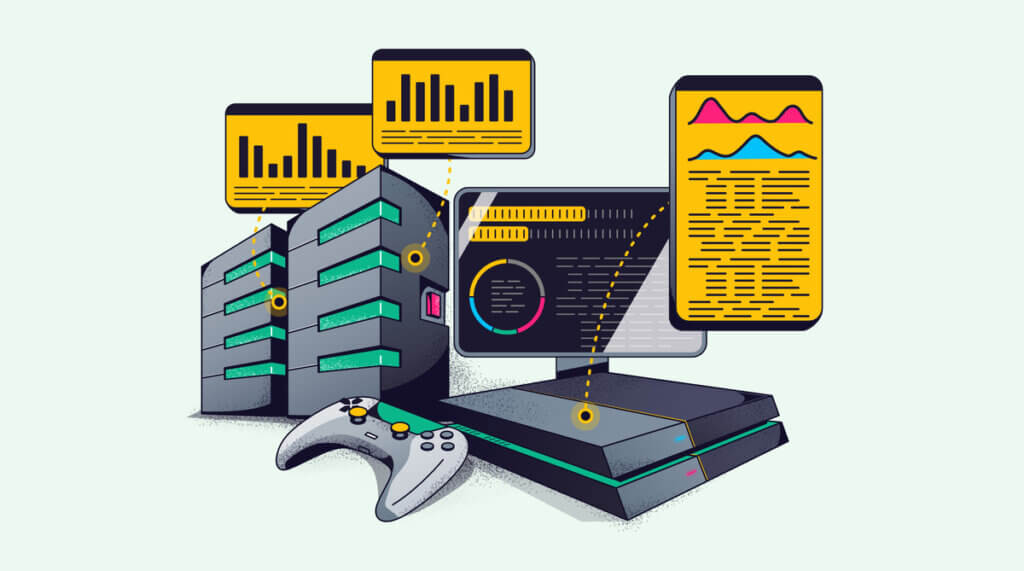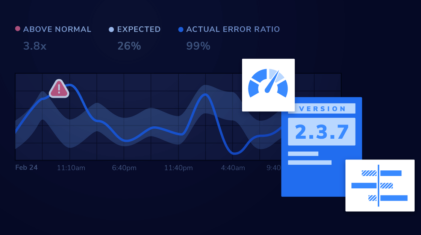One Click Visibility: Coralogix expands APM Capabilities to Kubernetes
There is a common painful workflow with many observability solutions. Each data type is separated into its own user interface, creating a disjointed workflow that increases…
Whether you are just starting your observability journey or already are an expert, our courses will help advance your knowledge and practical skills.
Expert insight, best practices and information on everything related to Observability issues, trends and solutions.
Explore our guides on a broad range of observability related topics.


The gaming industry delivers specialized software at scale to users who expect a flawless interface. Application performance monitoring (APM) will measure critical software performance parameters using telemetry data. By monitoring this data, teams can ensure their game delivers the best user experience and quickly detect when the software needs updates to fix errors or meet key performance indicators (KPIs).
Application performance monitoring in gaming is generally separated by monitoring the user’s machine performance and the host’s servers and software. Here we will discuss what game publishers can do to improve the gaming experience for their users and how to approach the integration of APM with gaming software.
Active application performance monitoring can highlight and help diagnose problems earlier before affecting many users. Monitoring telemetry data will show when there are issues with your game’s responsiveness or user experience. It will allow software teams to track in-game errors and record how users interact with games to ensure meeting business targets.
High responsiveness and low latency are critical for games to succeed and draw players back daily. Reducing latency is especially important in cloud gaming since the player experience is tightly tied to latency issues. A delay between a user action and the app responding to that action can make games unplayable to users.
Latency issues can be caused by delays on the server hosting the game. These are directly in the control of software teams to monitor and fix. Application performance monitoring can reveal server latency issues in real time so that DevOps teams can be deployed to resolve issues efficiently.
Wireless mobile networks can exacerbate latency issues on mobile games that add extra time to process user interactions, making the app appear less responsive. Application performance monitoring metrics for these games must be set up to differentiate data geographically. DevOps teams must determine if an issue is isolated to specific regions to provide an effective solution. Latency issues can be masked if collected data is aggregated across regions where only some locations are experiencing issues.
Player experience in gaming is a measure of how satisfying and easy to use your game is. Your game should evoke positive emotions and draw users back to it, choosing it over other games. A bad user experience can drive users away from your app permanently.
Application performance monitoring should collect telemetry data that indicates if the player experience is objectively successful. Data collected to measure user experience includes:
These statistics can help management and design teams understand where users are getting stuck within your game. When users have to spend too long on a given level or task, they are likely to abandon the task and may also abandon the game. This data helps design a balance between engaging players and allowing them to progress through the game while feeling satisfied with their accomplishments.
Business KPIs to measure in games include retention, churn, conversion, and revenue per user. For some applications, marketplace providers do give these metrics for use. If these are included in application performance monitoring telemetry data, software teams can get more insight than what marketplaces alone provide.
Marketplace metrics will, for example, show the retention rate or how many users have uninstalled the app over time. Performance metrics can also match this uninstall action with other events to help explain why users have left the game. It may be that users in a particular region experienced so much lag that the game was unplayable. This is critical to know so software teams can fix the problem instead of it being hidden by limited data context.
Game software is complex and requires very fast feature turnover. Many in-game features need to be delivered to users quickly for a game to be successful. With this inherently will come bugs. These could be memory management errors, excessive code with insufficient testing, device incompatibility, and network issues, among other error sources.
While all software teams will need to troubleshoot and fix bugs, having the data available to identify, diagnose and fix these bugs will set your team apart. Limiting the users who experience the errors and the number of times users see the same issue will help make your game successful.
Application performance monitoring tools must collect and effectively display telemetry data to software teams. Considerations for which telemetry data to focus on and which tool to use to collect and analyze data depend greatly on the design of your gaming application. One significant difference in applications is whether they are online or installed games.
Online games typically use a thin client on a webpage that connects to either a local private or cloud server. A common metric that should be monitored with these games is latency, as it is a common performance problem. To reduce latency issues, software can utilize a distributed model content delivery network (CDN), allowing servers close to users to serve their data. Monitoring distributed applications require tools to collect distributed data in a centralized location for display to DevOps teams.
Monitoring online games also require accommodation of sudden bursts of telemetry data transmission when user traffic increases. This commonly follows events like new feature releases. Ideally, the tool chosen will not penalize for accommodating traffic spikes with additional cost.
Installed games include phone applications like android or iOS apps. A wide range of phones will be used for each operating system, and software teams need to develop software that will run effectively on all supported hardware. Application performance monitoring telemetry data should include device and application version data so events can be correlated to a specific release and device problem. Without this information, accurately reproducing or tracking issues becomes virtually impossible.
Application performance monitoring tools will need to collect and aggregate data so that DevOps teams can easily visualize system performance and spot problem areas. Aggregating data by region and device gives insight into how widespread problems are and where to start looking for possible solutions.
Application performance monitoring in the gaming industry helps ensure your game is successful and loved by users. Collecting and adequately aggregating telemetry data from online and installed games can highlight problems for software teams to solve, like latency, in-game failures, and missed KPIs. Visualizing and alerting on anomalous events sets your DevOps team up for success in making your game memorable and indispensable.

There is a common painful workflow with many observability solutions. Each data type is separated into its own user interface, creating a disjointed workflow that increases…

The gaming industry is an extensive software market segment, reaching over $225 billion US in 2022. This staggering number represents gaming software sales to users with…

DevOps logging monitoring didn’t simply become part of the collective engineering consciousness. It was built, brick by brick, by practices that have continued to grow and…
